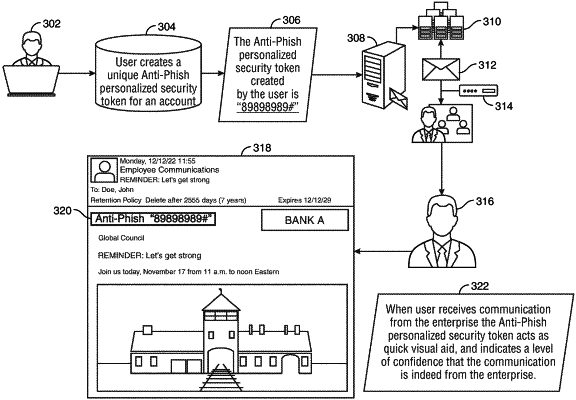| CPC H04L 63/1483 (2013.01) | 6 Claims |

|
1. A system for securing electronic communications, the system comprising:
an originating server located at an entity;
an edge server located at the entity;
a database located at the entity;
wherein during a registration process:
the originating server receives a request from a user, the request to receive an anti-phish, personalized, security token with each electronic communication from the entity;
the originating server displays a plurality of selectable options for the anti-phish, personalized, security token, wherein the plurality of selectable options comprises:
a numeric code, a photograph, a plurality of photographs, an animation, a plurality of animations and/or a combination of the numeric code, photograph, plurality of photographs, animation and plurality of animations; and
a dynamically-rotating, digital-artwork file linked to a non-fungible token (“NFT”), said digital-artwork file that rotates on a predetermined schedule;
the originating server receives a selection of an option for the anti-phish, personalized, security token, the option included in the plurality of selectable options;
the originating server registers the selected option as being linked to a profile associated with the user; and
the originating server stores, in the database, the anti-phish, personalized, security token linked to the profile associated with the user;
wherein during an in-use process:
the originating server generates an electronic communication, where a recipient of the electronic communication is the user;
the originating server forwards the electronic communication to the recipient;
the edge server intercepts the electronic communication;
the edge server retrieves the anti-phish, personalized, security token linked to the profile associated with the user;
the edge server populates the electronic communication with the anti-phish, personalized, security token; and
the edge server forwards the electronic communication to one or more electronic channels associated with the recipient.
|